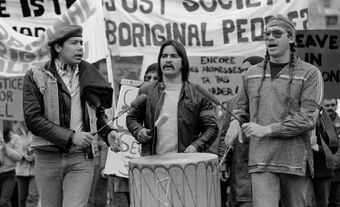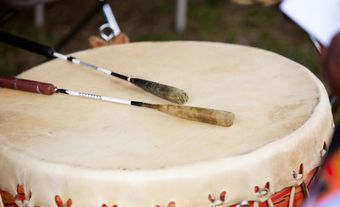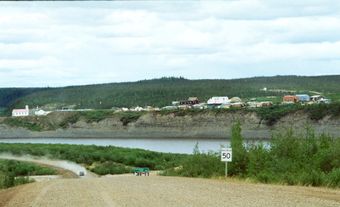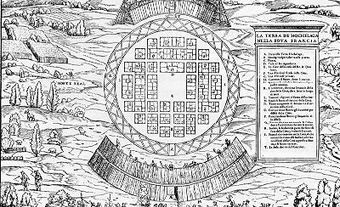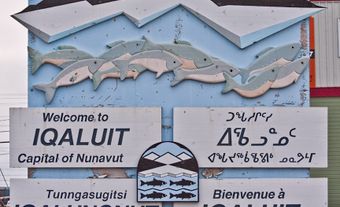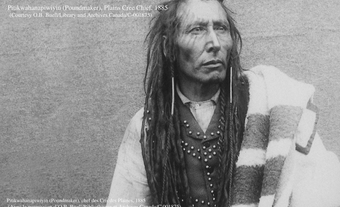Stadacona was an Iroquoian village located at the present site of Quebec City, Quebec. It had an estimated population of about 500. French navigator Jacques Cartier was led to the village on his second voyage in 1535 and wintered at a safe distance, across the St-Charles River.

Jacques Cartier in Stadacona
In 1535, explorer Jacques Cartier was led to the village of Stadacona. He wintered at a safe distance, across the St-Charles River. In midwinter, more than 50 Stadaconans died, likely of European diseases to which they had no immunity. In addition, 25 French died of scurvy before the Indigenous peoples provided them with a cure — a potion made from fronds of white cedar.
Cartier unwittingly offended the Stadaconans by establishing a base without their permission and by travelling upriver to Hochelaga. He kidnapped Donnacona, his two sons and seven others and returned to France. All except a young girl perished before Cartier returned to Stadacona in 1541.
He established a second base at Cap Rouge, upstream from Stadacona, but increasing hostility and his belief that he had found gold and diamonds prompted his retreat. Jean-Fançois Roberval arrived at Stadacona shortly after and though relations with the Stadaconans improved, he abandoned the fledgling colony.
St. Lawrence Iroquoians
By the time the French returned to the site in 1603, the Stadaconans and the St. Lawrence Iroquoians had vanished. Various theories about their fate were put forward: that they were driven out by the Innu (Montagnais-Naskapi) and Algonquin; that they suffered poor harvests brought on by climatic changes; that they succumbed to European diseases; and that they were dispersed by the southern Haudenosaunee, (e.g., the Mohawk).
There is some evidence that refugees from Stadacona and Hochelaga were adopted by the Huron-Wendat. By Samuel de Champlain's time, the St. Lawrence Valley was travelled mainly by war parties of the Montagnais and Iroquoians.

 Share on Facebook
Share on Facebook Share on X
Share on X Share by Email
Share by Email Share on Google Classroom
Share on Google Classroom
